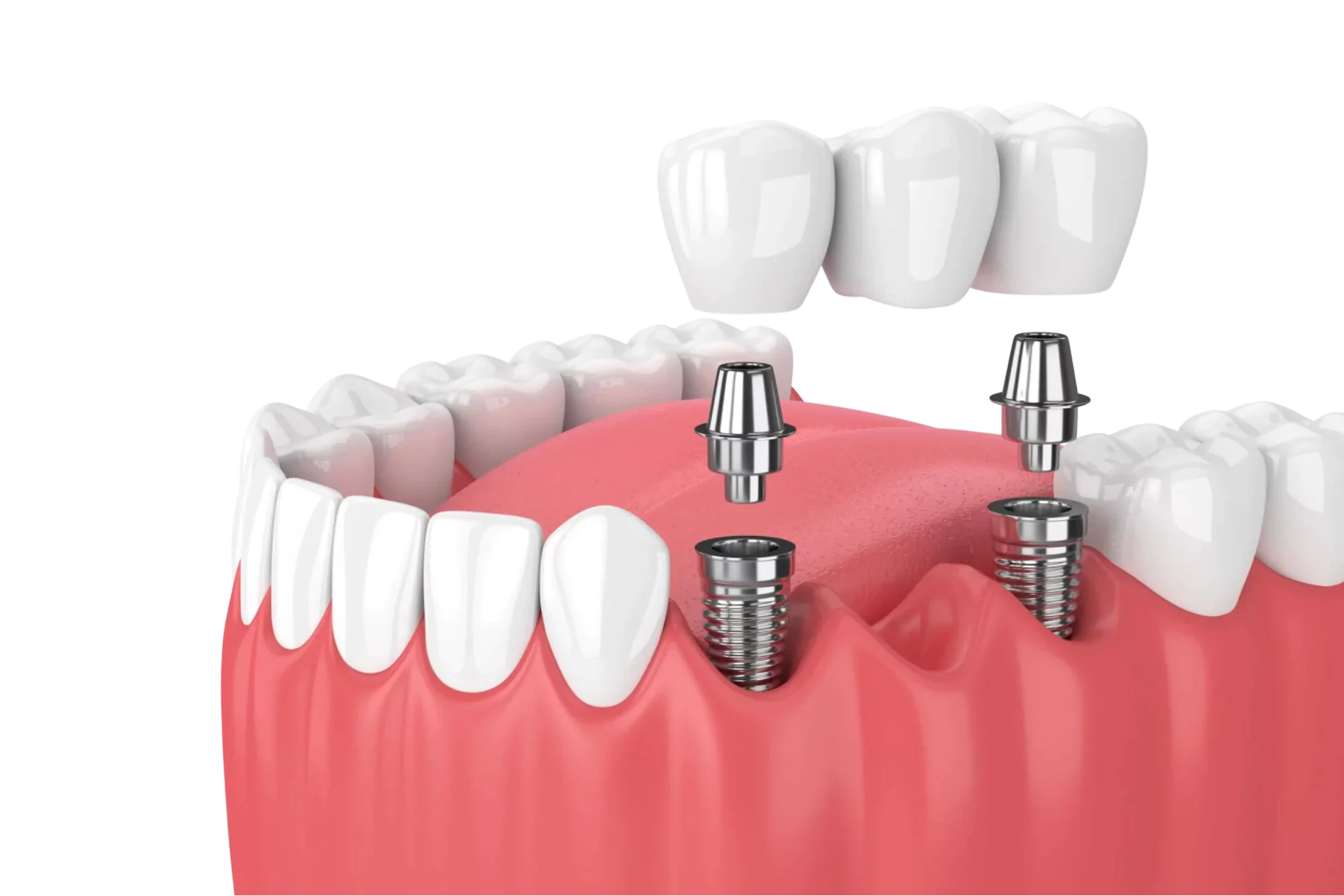
Dental bridges serve multiple purposes beyond simply filling the empty spaces in your mouth.
Here are some key benefits:
There are different types of dental bridges available, and your dentist will recommend the most suitable option based on your specific needs. These may include:
Your dentist will evaluate your oral health, consider factors such as the location of the missing teeth, your jawbone condition, and your budget. Based on this assessment, they will recommend the most appropriate type of dental bridge for you.
With advancements in technology, options like zirconium bridges created using 3D technology are also available. Your dentist will guide you through the process, ensuring that you receive the dental bridge that best suits your needs.
If you are missing teeth, don’t wait any longer to explore the benefits of dental bridges. Schedule a consultation with our partnered dentists who will provide expert advice and guidance throughout the process. Enjoy the affordability and long-term solution that dental bridges offer, helping you regain a complete and confident smile.
Unleash the power of your smile and embark on a life-changing journey today! Embrace a transformational experience that will redefine your confidence and elevate your smile to new heights. Take the first step towards a radiant future and unlock the extraordinary potential within you. Let your smile become the symbol of your transformation and embrace the incredible possibilities that Await.

The term “bridge” in dentistry refers to a prosthetic device used to replace one or more missing teeth. It “bridges” the gap between the remaining natural teeth or dental implants, filling the space left by the lost tooth or teeth.
The primary function of a dental bridge is to restore your ability to bite and chew properly, allowing you to enjoy a wide variety of foods. By filling the empty space, the bridge also helps maintain the natural facial structure and appearance, preventing the surrounding teeth from shifting or becoming loose.
Before undergoing the dental bridge procedure, your dentist will provide comprehensive guidance and support throughout the entire process. They will assess your dental needs and recommend the most suitable type of bridge for your specific situation. This ensures that you receive a bridge that fits comfortably, functions effectively, and blends seamlessly with your natural teeth, enhancing both your oral health and your smile.
A dental bridge is required in various situations when a tooth is lost. Here are some common scenarios where a dental bridge may be recommended:
The process of getting a dental bridge typically involves multiple visits to your dentist. The adjacent teeth are prepared by removing a small amount of enamel to create space for the bridge. Impressions of your teeth and the gap are taken to create a customised bridge in a dental lab. In the meantime, a temporary bridge is placed to protect the prepared teeth.
Once the permanent bridge is ready, it is fitted and adjusted for proper appearance and functionality before being permanently cemented in place. It is important to note that the removal of a permanent bridge should only be done by a dental professional to avoid causing damage to the bridge or natural teeth. Regular dental visits and proper oral hygiene practices are essential to maintain the longevity and functionality of the dental bridge.
Whether you need implants or not depends on your specific dental situation. Dental implants are typically recommended when you have one or more missing teeth and want a stable and long-lasting solution for tooth replacement. Here are some factors to consider:
It is best to consult with our partnered dentist or an oral surgeon who specialises in implant dentistry. They will assess your specific situation, discuss the available options, and recommend the most appropriate treatment plan for you.
Dental bridges can be made from different materials, including ceramics (porcelain), metal, or a combination of both. The choice of material depends on various factors such as the location of the bridge in the mouth, aesthetic preferences, and the recommendation of the dentist.
Ceramic bridges, particularly those made from porcelain, are often preferred for their natural appearance and ability to mimic the colour and translucency of natural teeth. These bridges can be matched to the surrounding teeth, making them blend seamlessly with the rest of your smile.
Metal bridges, on the other hand, are known for their strength and durability. They are often made from alloys such as gold or nickel-chromium. Metal bridges may be recommended for areas of the mouth that require additional strength, such as the back teeth.
In some cases, a combination of ceramic and metal materials is used to create a bridge that combines the strength of the metal with the aesthetic benefits of the ceramic. The metal framework provides stability, while the ceramic overlay provides a natural-looking appearance.
Caring for your dental bridge is essential to maintain its longevity and overall oral health. Here are some tips for bridge care:
Remember to follow your dentist’s specific instructions for caring for your bridge, as they may have additional recommendations based on your individual needs and the type of bridge you have.
Stay up-to-date with our latest updates!
We will never send any spam emails.
